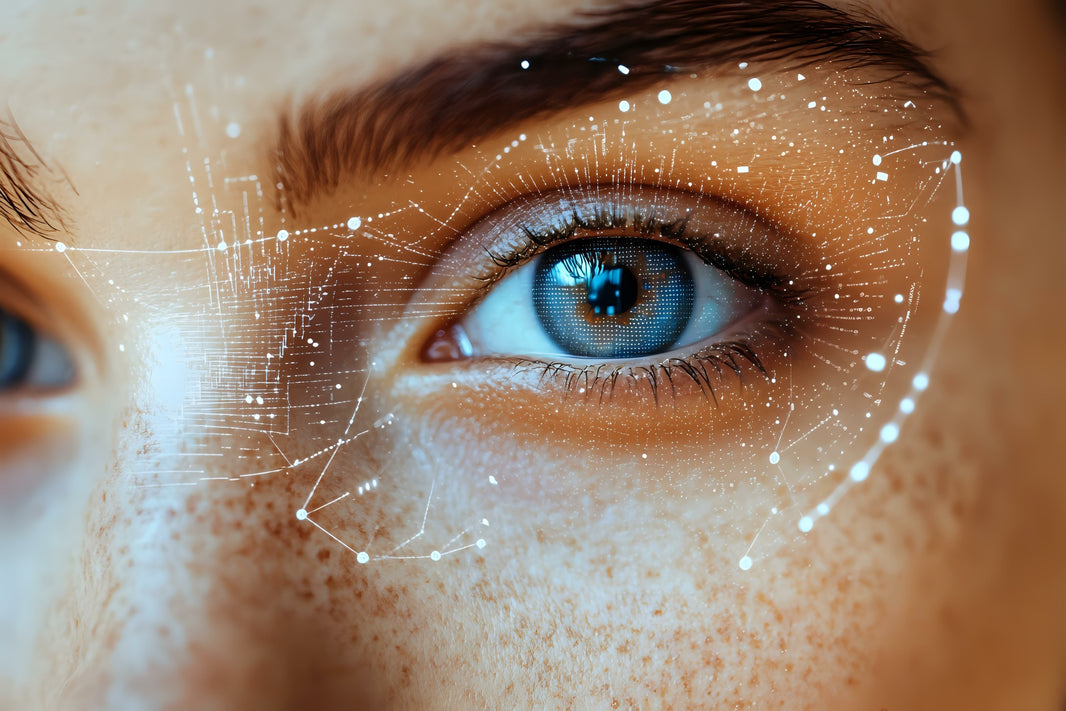Feng-Gui: The web analytics tool that sees your website through the eyes of users
Imagine knowing exactly where your website visitors' eyes go first – before you even make any changes. Doesn't that sound fascinating? That's exactly what Feng Gui promises, a web analytics tool that uses artificial intelligence and neuroscientific insights to simulate user attention and show you how to optimize your web design.
Feng-Gui isn't a traditional analytics tool like Google Analytics, which provides you with numbers on clicks and bounce rates. Instead, it goes a step further and uses predictive eye-tracking technology to predict which areas of your website will receive the most visual attention. Whether you're an experienced web designer looking to increase conversion rates or a beginner designing your first page, this tool offers fascinating insights into user psychology. Let's dive in together and discover how Feng-Gui works, why it's so valuable for modern web design, and how you can put it to practical use.
How Feng-Gui works as a web analytics tool
The principle of Feng-Gui is as simple as it is ingenious: You upload an image of your website—be it a screenshot of the homepage, a landing page, or a product design—and the tool creates a heat map within seconds. This heat map shows which areas of your page would attract users' attention, based on algorithms that mimic human visual behavior. The technology behind it comes from research into visual perception and is based on scientific models, such as the saliency model. This model analyzes contrasts, colors, shapes, and arrangements to predict what will be eye-catching.
For beginners, this means you don't have to conduct expensive eye-tracking studies with real people to understand whether your call-to-action button is visible. Professionals, on the other hand, can use Feng-Gui to test hypotheses before launching a page. For example, if you suspect your banner isn't getting enough attention, the heatmap will immediately show you whether it's due to the position, color choice, or cluttered design. According to studies on visual perception, people focus on the most striking elements of a page within the first 3-5 seconds—Feng-Gui simulates precisely this moment.
The tool also offers additional features, such as "Areas of Interest" (AOI) analysis, which allows you to highlight specific areas of your page and check how much attention they receive. An opacity map also shows you which parts of your website might remain "invisible." This makes Feng-Gui a true game changer when it comes to optimizing user experience (UX) and search engine optimization (SEO) – because a well-designed page retains visitors longer and indirectly improves your ranking.
Psychological insights behind Feng-Gui and Neuro Web Design
Why is Feng Gui so effective? The reason lies in its connection to psychological and neuroscientific principles that play a central role in neuro web design. Our brains don't process visual information randomly—there are clear patterns. For example, high-contrast colors like red or yellow attract attention more than muted tones, which is confirmed by studies like Yarbus's (1967) eye movement studies. Feng Gui uses such insights to predict what your users will see.
Another principle is the so-called "F-shape." Studies show that people often read digitally in an F-pattern: They scan the top bar horizontally, then the left side vertically, and finally, they only skim the remaining content. If your most important content falls outside this pattern, it will be overlooked—and that's exactly what Feng Gui uncovers. For web designers, this is invaluable: They can place content precisely where it's guaranteed to be noticed.
Statistically, approximately 55% of visitors leave a website within 15 seconds if they don't immediately find what they're looking for (source: Nielsen Norman Group). Feng Gui helps you capitalize on this critical time by highlighting design weaknesses. A practical example: An online store discovered that its "Buy Now" button was barely noticeable in the heatmap because it was too close to a colorful banner ad. After adjusting the position, the conversion rate increased by 12%. Such results demonstrate how closely neuro web design and web analytics are linked.
Practical examples: Feng Gui in application for web design and SEO
Let's move on to concrete applications – because theory is nice, but practice makes all the difference. Imagine you run a website for handmade jewelry. Your homepage displays a large image of your latest collection, with a small "Add to Cart" button below it. You upload the screenshot to Feng-Gui, and the heatmap shows: attention is almost exclusively focused on the image, while the button goes virtually unnoticed. What to do? You move the button higher, use a more contrasting color (e.g., orange instead of gray), and add a short, concise headline. A further analysis confirms: Now the button is being seen – and your clicks are increasing.
Another example for professionals: A web designer is working on a landing page for a marketing campaign. The goal is to generate email signups. The initial heatmap shows that a large block of text distracts attention from the signup form. He shortens the text, puts the form in focus with the F-shape, and tests different variations with Feng Gui. The result? A version with a clear, colorful button and less text achieves 20% higher AOI visibility—and subsequently, more signups.
Feng Gui is indirectly useful for SEO. Search engines like Google prefer pages with low bounce rates and high dwell times. If your visitors stay longer thanks to an optimized design because they immediately find what they're looking for, this improves your rankings. You could also incorporate keywords like "web analytics," "eye tracking," or "neuro web design" into your metadata and text to attract readers like you to your site—Feng Gui then helps make this content visible.
How to use Feng Gui yourself: Tips for beginners and professionals
So how can you get started yourself? It's easy: Visit the Feng-Gui website, sign up (there's a free trial and paid plans), and upload a screenshot of your page. You'll have your heatmap within seconds. For beginners, I recommend starting with the homepage and focusing on three questions: Is my main button visible? Is anything unnecessarily distracting attention? Is my text positioned legibly? Then adjust step by step and test again.
Professionals can go deeper: Use the AOI function to analyze specific elements like logos, navigation, or product images. Combine Feng Gui with tools like Google Analytics to compare predicted attention with real click data. A practical tip: Test different color combinations—studies show that red generates up to 21% more attention than blue (source: Journal of Advertising Research). Document your changes and measure the results, for example, through conversion rates or dwell time.
Whether you're just building your first website or have already optimized dozens of projects, Feng Gui gives you a new perspective. It shows you not only what your users see, but also how you can control their behavior. Try it out, experiment with your designs, and be amazed by the results. Your website will thank you—and your visitors even more so!









